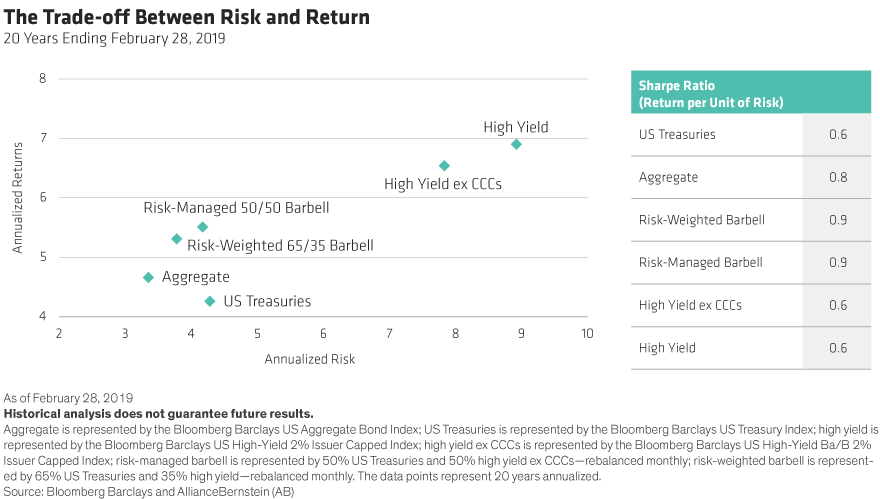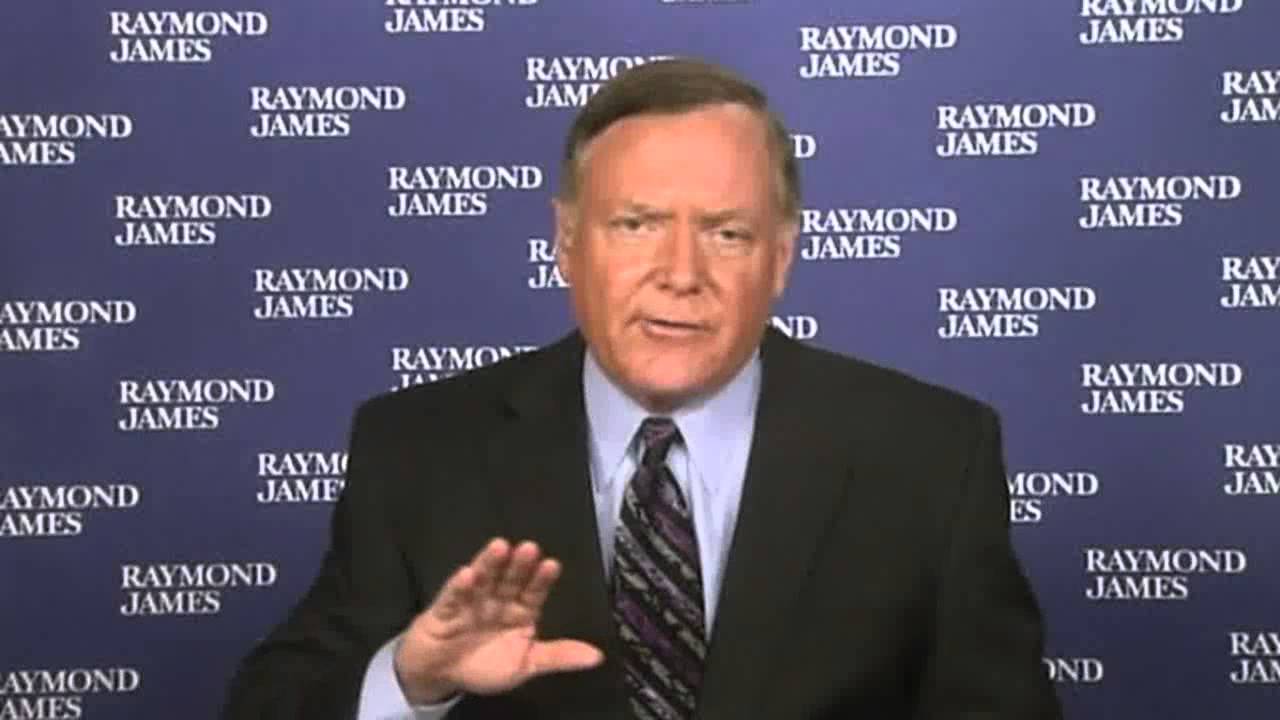by Matthew Sheridan, Fixed Income, AllianceBernstein
As economic cycles enter their later stages, investors sometimes find that they’re taking too much risk to generate income. There’s a strategy that can help—and we think now is the time to use it.
Pairing high-yield corporate bonds and other credit assets with high-quality government debt in a dynamic “barbell” strategy has been a good way to generate income while limiting downside risk. This is mainly because the return streams tend to be negatively correlated; one does well when the other struggles, and a manager can alter the weightings as valuations and conditions change.
A barbell approach can work at any time in a market cycle, but we think conditions today are especially ideal for it—in particular for investors who want to limit their downside risk without giving up too much income. Here are three reasons to lift a barbell today:
1. You’re not being paid to take all that credit risk. Most credit assets are expensive today. Take the US high-yield market. The average yield spread—the extra yield over comparable government bonds—has hovered recently around 3.80%. That’s well below the long-run average of 5.07%.
This should be a concern for investors who reduced duration—a measure of interest-rate sensitivity—when interest rates were rising and over-allocated to credit. That was a common strategy in 2018 as the US Federal Reserve delivered four interest-rate increases and economic growth was strong.
Here’s the problem: both actions reduce the defensive nature of a bond portfolio in a risk-off environment. Investors learned that at the end of last year, when markets began to fear the Fed had tightened policy too much and credit and other risk assets sold off.
We now know the fourth-quarter downturn was a correction, not the start of a prolonged risk-off environment. But at 10 years and counting, the US credit cycle is one of the longest on record. At some point, the expansionary period will end and the downturn phase will begin. We’re not quite there yet. But we think we’re getting closer—and so, it seems, does the Fed, which last week reduced its US growth forecast and signaled that it was unlikely to raise rates again this year.
This tells us two things. First, investors who are overweight credit aren’t being properly compensated for the risk. Second, there’s no reason to fear duration. The Fed’s wait-and-see mode on future rate hikes suggests monetary policy won’t get much tighter in the near term, while the possibility of slower growth ahead means interest-rate exposure should help to cushion your portfolio against volatility and drawdown risk.
2. US yield curves are flat. This happens when long-term yields aren’t as high as they normally are relative to shorter and intermediate yields. It matters because, when the curve is flat, returns tend to be stronger in higher-credit quality securities and lower in some of the bond market’s riskiest segments.
With a barbell, a manager can rebalance investors’ portfolios as the curve flattens by tilting toward higher-quality, interest-rate-sensitive securities at the expense of the riskiest sectors of the credit market. Should the US Treasury curve invert—usually a harbinger of recession—and credit markets sell off, investors can sell their outperforming US Treasuries and other high-quality assets and rebalance toward higher-risk assets at more attractive prices.
When it comes to the credit side of the barbell, flat curves make higher-quality, intermediate maturity bonds more attractive than longer ones because they deliver more yield per unit of duration, with the sweet spot somewhere between three and five years.
3. You can reduce volatility without giving up too much return. To see what we mean, let’s look at a couple of potential barbell strategies.
The first is a barbell with 65% of its assets in US Treasuries and 35% in high yield. We call this a risk-weighted barbell because credit is typically twice as volatile as interest-rate-sensitive assets, so investors would have to hold more rate exposure to even out the risk weighting on each side. The second is a 50/50 construction that excludes CCC-rated junk bonds—the riskiest slice of the high-yield universe. We’ll call this a risk-managed barbell.
Over the past 20 years, both strategies would have comfortably outperformed US Treasuries and provided between 75% and 80% of the average annualized return of US high yield. But as the Display also shows, both would have had better returns per unit of risk than either US Treasuries or high yield.

Within credit for example, blending exposure to high-yield bond sectors—European banks, US energy companies—with positions in select emerging-market debt and US securitized assets offers a good mix of credits that can generate high levels of income.
After a decade of expansion, financial markets may finally be approaching a turning point. For bond investors, that means finding a way to keep the income flowing while also shielding your portfolio from the full effect of higher volatility and slower growth. The way we see it, the time to act is now.
Matthew Sheridanis a portfolio manager for global multi-sector.
The views expressed herein do not constitute research, investment advice or trade recommendations and do not necessarily represent the views of all AB portfolio-management teams.
Copyright © AllianceBernstein















